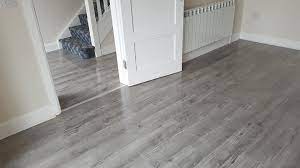
Floor protectors: yes or no?
Well, it seems obvious but there are plenty of people searching this question. The simple answer is: if you care about your floors, you should get floor protectors. However, solving the problem of floor protection is not quite as simple as deciding you need it.
Don't let your dining chair wreck your floor!
Chances are if you're reading this, you've put a lot of effort into your home - hence why you're finding out solutions to these kinds of problems. It's a no-brainer that you need to put precautions in place to stop your dining chairs making marks and ruining your flooring. There are different types of floor protectors available and of course, there are different types of flooring. All of these factors must be considered before you go out and buy any old protector! Let's start by going through the various types of floors.
What type of floor are you looking to protect?

Hard floor (wood, ceramic tiles)
You're going to want to use something that allows the chair to glide across the floor, as opposed to dragging. Try a soft material such as felt or rubber for your protectors. However, be wary of rubber as it can leave scuff marks! If you're using felt, it should be thick enough to work with heavier chairs.
Soft floor (vinyl, rubber)
Although this type of flooring is soft, it's still considered hard when compared to carpet. Again, felt and rubber protectors are probably going to be the most efficient. You can also use plastic protectors if you'd prefer.
Carpet
This is where it's totally different. Due to the nature of carpet, you'll need to use a hard material to stop chair legs getting stuck and marking the floor. The ideal protector would be made from steel or plastic.  So, now you know what kind of material you need for the flooring in question, let's get onto the various type of floor protectors.
So, now you know what kind of material you need for the flooring in question, let's get onto the various type of floor protectors.
what type of floor protectors are there?
The main difference between the protection types is the cost and level of protection they offer. Longevity is also something to consider with different protectors.
Nail-on pads
You can get nail-on (or tap-on) pads in most materials that you desire to protect your floor. You attach them to the bottom of your dining chair legs with a small nail or screw. Be careful when attaching the nail - if it's not hammered in properly it could scrape across your floor and totally defeat the object! Nail-on pads are probably the most secure of all the protectors due to the way they are attached to the chairs.
Self-adhesive pads
The clue is in the name - you stick the pads to the chair legs yourself! Simply peel off the protective layer and stick the protectors down. You'll usually find these sticky pads in a felt or rubber material. The benefit of these pads is that they are the least expensive and really easy to find. However, they won't last as long as nail-on or slip-on pads.
Slip-on pads
These pads are the easiest to apply as they simply slip over a chair leg. They last fairly well as they don't fall off like sticky pads. You'll find them in materials such as rubber or soft plastic.
Your thoughts
We hope this has helped you made a decision on which floor protectors to buy, if any at all. Let us know what you think in the comments of the best way to protect your floor from your dining chairs & any good brands to try!
 Chat with us on WhatsApp
Chat with us on WhatsApp


Comments